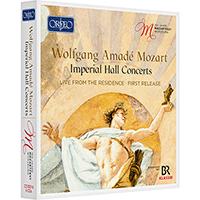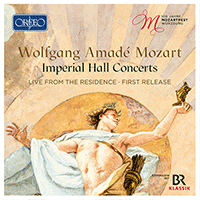Sigiswald Kuijken
Sigiswald Kuijken recalls his childhood as a total immersion in early music; he and his brothers Wieland (bass viol) and Barthold (Baroque flute and recorder) listened to the music of Lassus, Josquin et al., and taught themselves to play the various period instruments at their disposal. Whilst studying in Belgium Sigiswald had tried to avoid playing Baroque repertoire on the modern violin and around 1969–1970 he took up the Baroque violin, using Geminiani’s treatise to reappraise his technique and adopting a ‘chin-off’ hold.
His recordings demonstrate this performance specialism and hearing them reminds us of the truly radical nature of early music performance that emerged in the 1960s and 1970s. Accordingly, what we hear with Kuijken is a now-familiar period instrument approach which some might automatically equate with authenticity, even though that term in this context has long been discredited. The C.P.E. Bach, Corelli and Vivaldi examples all evidence the expected sonority of harpsichord and gut-string instruments played, by and large, with very little vibrato and creating a clean but warm sound without the encrustations of modern style. Kuijken’s is a fresh but quite objective tone, notable for its agility and energy in faster movements. It is also characterised by crispness of attack with plenty of short articulations and a certain precision, lacking only occasionally.
Kuijken’s playing, then, is impressive as well as comfortable for modern ears. The extent to which any of what he does actually reflects early string-playing practices remains speculative, however, and listeners hoping for a degree of authenticity should note that his style is much the same across all repertoire (whether it be North German or Italian), which is very unlikely to have been the case at the time these pieces were written.
There is some difference of approach when Kuijken (like many other Baroque specialists) eventually tackles Classical repertoire. The two Mozart sonatas (2006) selected here—the G Major K. 379 with its epic and impassioned Allegro second (final) movement and the rather more relaxed E flat K. 481—are both recorded with fortepianist Luc Devos and do suggest something of the changes in performance style revealed by a now-established area of performing practice scholarship. A warmer, more legato tone (aided by the ‘transitional’ violin bow) is the result, although the slow, narrow and frequent vibrato in the first movement of K. 379 contradicts Leopold Mozart’s advice on employing the device and might suggest that Kuijken is defaulting to the mainstream approach to this repertoire with which he undoubtedly grew up. His playing is filled with character and aplomb, but his off-string bowing can be aggressive, which is regrettable.
Different again is his 2009 recording of J.S. Bach’s solo Cello Suites, performed on a replica violoncello da spalla (lit. ‘little big shoulder viol’), which is slung round the neck and bowed ‘vertically’. Such a novelty for a twenty-first-century audience gives an idea of the genuine excitement surrounding the emergence of the innovative early music movement decades ago. As in those days, it is perhaps difficult to tell whether a performance is appealing purely because of its musical merits (these are imaginative interpretations), or because of the strange instrumentation. In any case, Kuijken relishes the parity with the human voice that one finds in the solo suites, and it is interesting to hear them interpreted by a violinist.
Above all else, Kuijken’s recordings—including a significant number where he is conducting—reveal a sensitive and lively early adopter of period instrument practices and these exciting performances remain enjoyable and interesting interpretations of well-known works.
© Naxos Rights International Ltd. — David Milsom (A–Z of String Players, Naxos 8.558081-84)


















